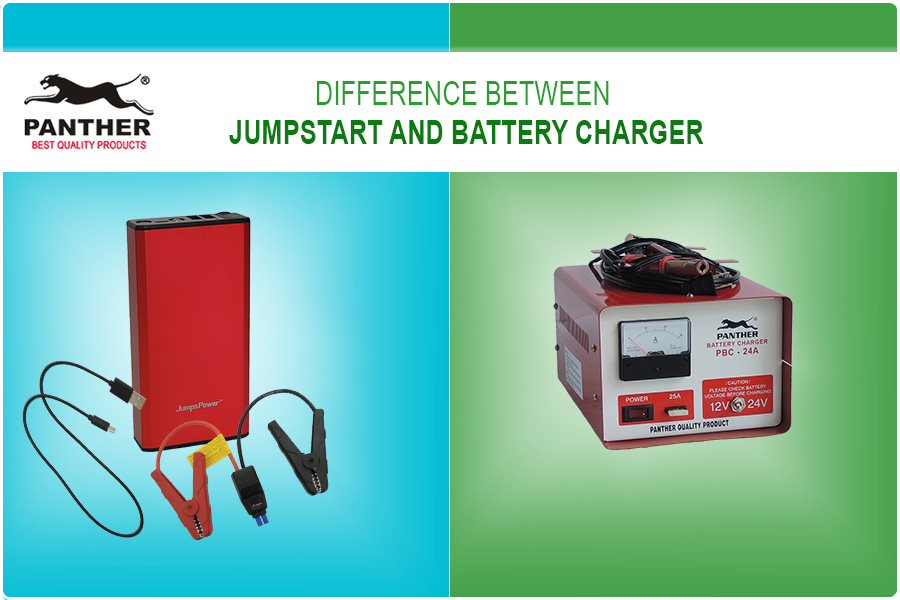
Table of Contents
Anyone who drives is sure to have experienced issues with their car batteries at one point or the other. In fact, a failing or depleted battery could possibly be a driver’s worst nightmare (barring a car crash) as this could prevent your car from starting, or render certain functions that rely on batteries powerless – including headlights, air conditioning, and dashboard lights.

Thankfully, jumpstarts and battery chargers exist – where both provide power to your car’s battery when it experiences battery depletion. However, their usage and purpose are actually quite different. While it would be beneficial to own both a jumpstart and a battery charger as they work harmoniously to ensure the quality of your car battery, oftentimes we are constrained by our available budget. As such, we’ll be explaining the difference between the two so you can purchase what you need more based on your usage requirements
Between the two, there are distinct differences in Time to Charge, Power Produced, Portability and Accessibility
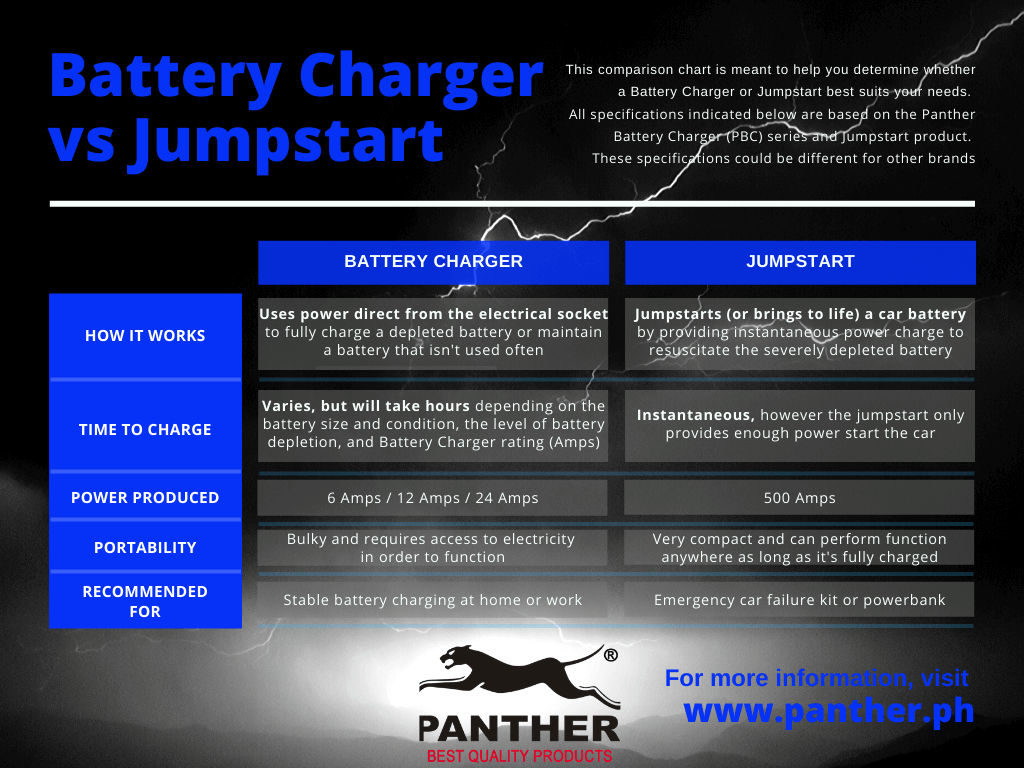
Time to charge
A battery charger provides steady long-lasting power that’s meant to fully recharge a battery. As such, it can take several hours to fully charge a battery using a battery charger depending on the battery size and condition, how severely depleted the battery is, and the Battery Charger’s rating (in Amps). This means it can take awhile before you have enough power to start the car and enable other battery-powered functions.
On the other hand, a jump start can provide instantaneous charge and power to the car battery, sufficient to revive the vehicle ignition. If the car alternator works properly, the alternator will then start charging the car battery as you drive. Otherwise, your car battery will slowly deplete again given limited reserves, and you’ll be faced with a dead car again after a few minutes
NOTE: The car alternator’s function is to charge the battery while the vehicle is in motion
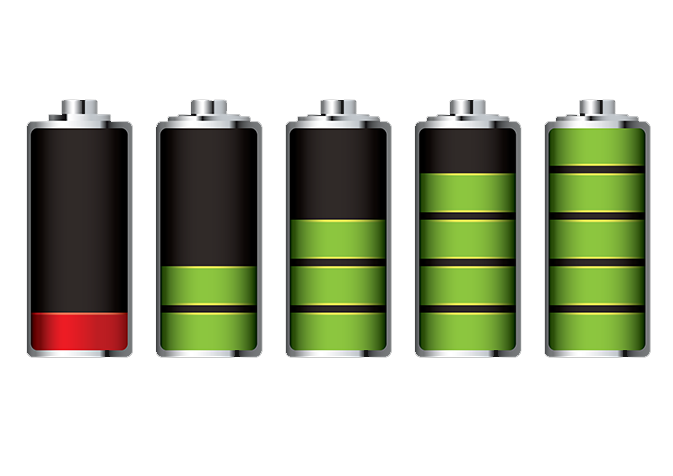
Power produced
As mentioned, battery chargers provide a slow and steady charge that’s meant to refill or maintain your battery power. The reason why it takes time is because a battery charger’s typical charge rating ranges from 6 to 24 amperes only. Some fast chargers can produce up to 50 amperes, however higher charge ratings could cause dangerous internal heat and may shorten the battery life.
On the other hand, jumpstarts produce instantaneous high-powered output that ranges from 500 to 3,000 amperes. Because of this sudden influx of power (akin to a defibrillator which delivers electric shocks to jumpstart your heart), jumpstarts can make a dead battery usable in seconds. However, if the car’s alternator isn’t functioning properly, then the car battery will quickly lose the charge and die again as you start using the car
Portability and Accessibility
Battery Chargers are bulky by nature because of the transformer found within the device. Not only that, in order to use the Battery Charger, you need ready access to electrical energy. As such, most people use their Battery Charger at home or at their workplace where there’s ready supply of power without the need to constantly move the Battery Charger around
On the other hand, jumpstarts are typically compact and can be included as part of your emergency car failure kit. A fully charged jumpstart can easily perform its function for a couple of times, until its battery capacity is exhausted – this makes it incredibly versatile and can even act as a powerbank of sorts for small consumer electronics such as mobile phones, tablets and laptops

Now that you have a better idea of the differences between a Battery Charger and a Jumpstart, we hope you can make the right decision when purchasing the device that best suits your purpose and your budget. Below are the available product models being sold by Panther
Note: All products come with 1 pair battery clip (positive and negative)
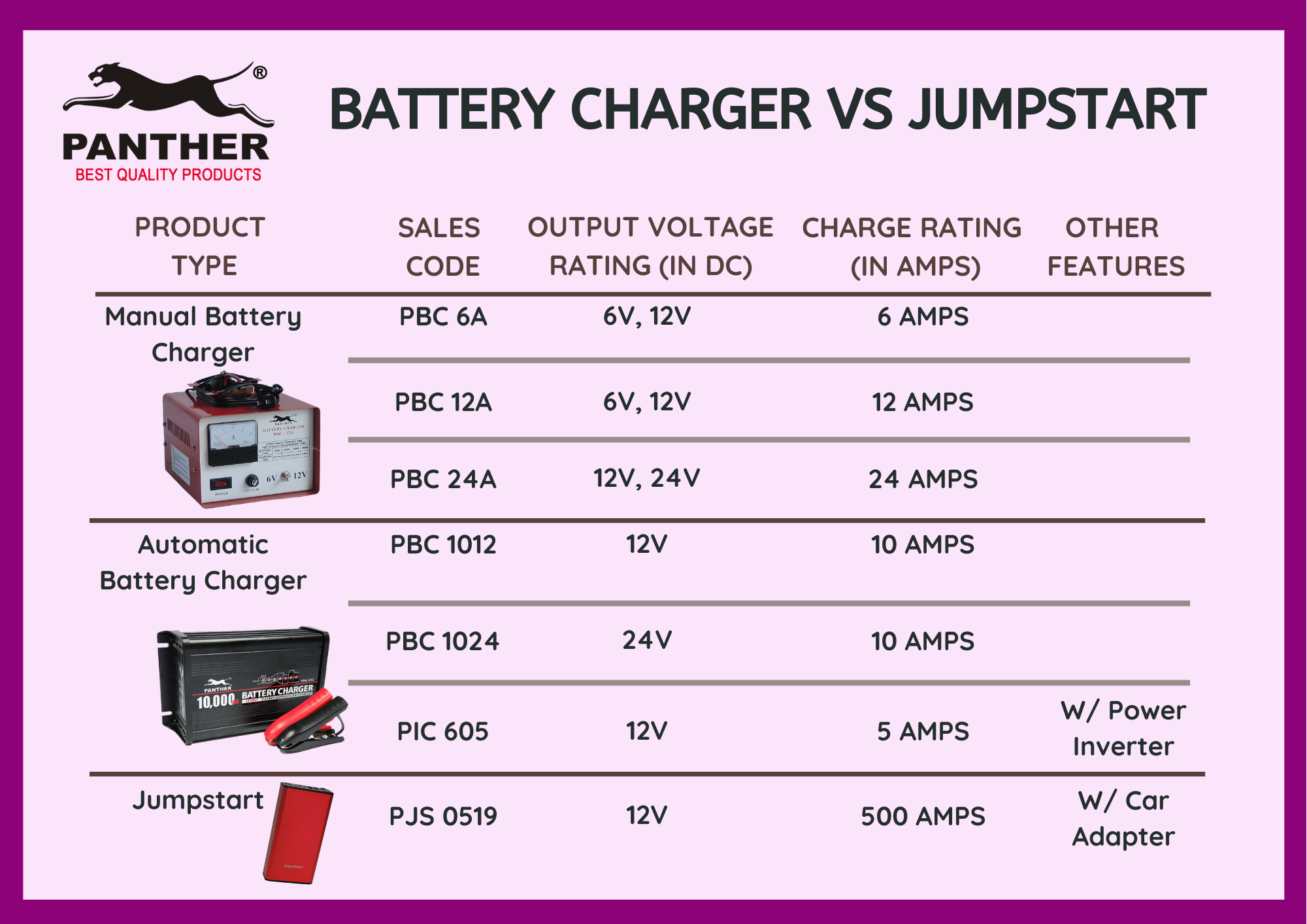

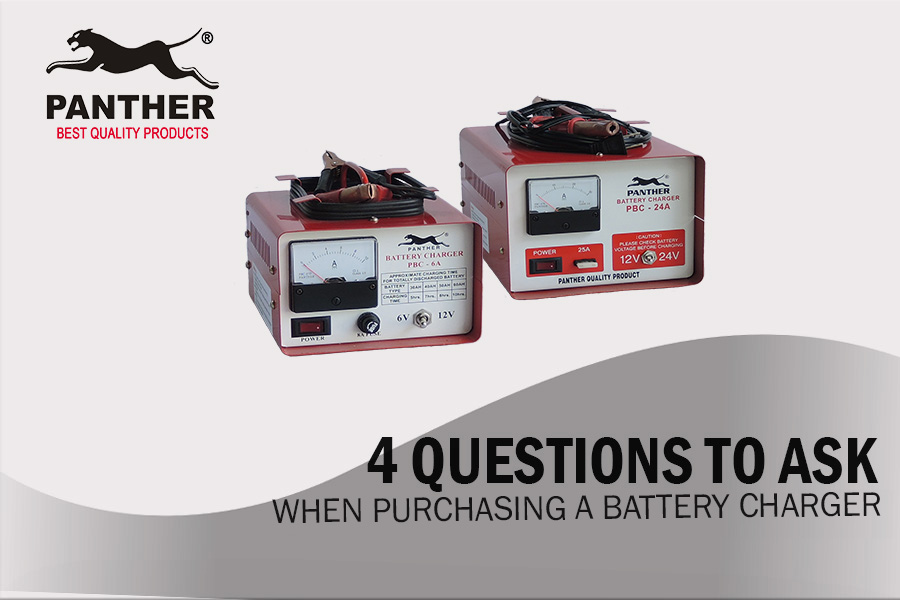


0 Comments